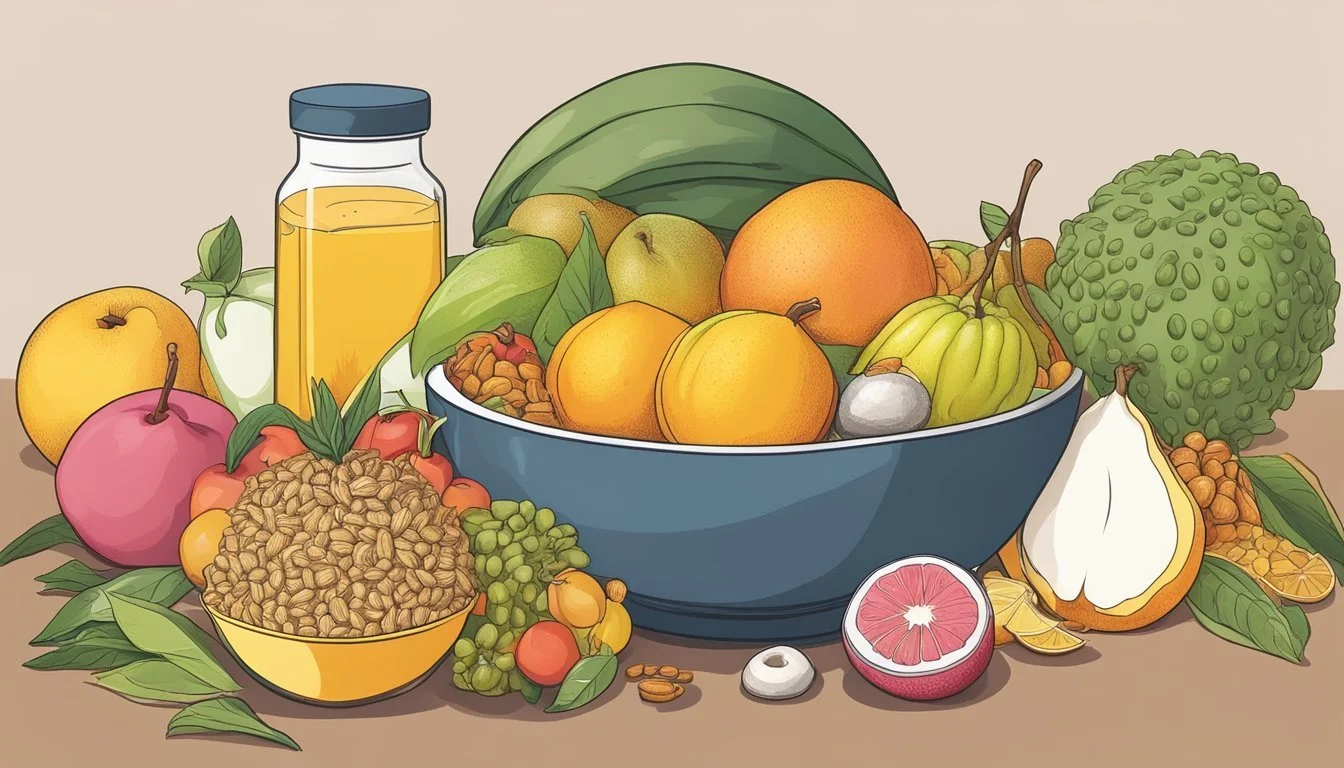Can Diabetics Eat Zalacca? Insights and Guidelines
Can diabetics eat Zalacca? Known for its reddish-brown scaly skin and sweet-tart flavor, zalacca, also called salak or snake fruit, often catches the eye of those looking for exotic fruits. For individuals managing diabetes, fruit choices become crucial due to varying sugar levels and glycemic indices.
Diabetics can eat zalacca in moderation. The fruit contains a reasonable amount of fiber, which helps in slowing the absorption of sugar into the bloodstream. This makes it a potentially suitable option for those watching their blood sugar levels. Additionally, zalacca contains essential vitamins and minerals that contribute to a balanced diet.
When incorporating zalacca into a diabetic meal plan, it's important to monitor overall carbohydrate intake. Pairing it with other low-carb, high-fiber foods can help maintain balanced blood sugar levels. As always, consulting a healthcare provider or a registered dietitian can provide personalized guidance.
Understanding Diabetes and Diet
Managing diabetes effectively involves carefully considering one's diet, particularly in relation to carbohydrate intake, fiber, and overall nutrition. Balancing these elements can significantly impact blood sugar levels and overall health.
Importance of Diet in Managing Diabetes
Diet plays a critical role in managing diabetes. Proper nutrition helps maintain stable blood sugar levels and supports overall health.
Patients need to focus on eating meals at regular intervals to optimize insulin usage. Consulting a registered dietitian can help design a diet plan tailored to individual health goals, tastes, and lifestyles. Emphasizing non-starchy vegetables, lean proteins, and healthy fats can contribute to better glucose control.
Carbohydrates and Blood Sugar Control
Carbohydrates have a direct impact on blood sugar levels. They break down into glucose, which enters the bloodstream and raises blood sugar levels.
For diabetes management, it is essential to monitor carbohydrate intake meticulously. This includes being aware of the type and amount of carbohydrates consumed. Simple carbs like those found in sugar-sweetened beverages and white starches can cause rapid spikes in blood sugar, whereas complex carbs have a more gradual impact.
Role of Fiber in a Diabetic Diet
Fiber is beneficial for diabetes management as it helps regulate blood sugar levels. Including high-fiber foods like whole grains, vegetables, fruits, nuts, and seeds can slow the digestion of carbohydrates and subsequent glucose absorption.
A high-fiber diet can also aid in maintaining a healthy weight, reducing the risk of cardiovascular disease, and improving overall digestion. Aim to include varied sources of fiber in daily meals to get balanced nutrition and support metabolic health effectively.
What Is Zalacca?
Zalacca, also known as snake fruit, is a tropical fruit native to Indonesia. It is notable for its reddish-brown scaly skin and sweet, tangy flavor.
Nutritional Profile of Zalacca
Zalacca is rich in vitamins and minerals, offering notable amounts of vitamin C, potassium, and beta-carotene. A 100-gram serving typically provides around 82 calories, primarily from carbohydrates. It contains moderate amounts of fiber, which can aid in digestion and blood sugar regulation. The fruit is also low in protein and fat, making it a suitable option for various dietary needs. Due to its high antioxidant content, Zalacca may help combat oxidative stress and inflammation. The mix of nutrients makes it a beneficial addition to a balanced diet.
Comparison to Other Fruits
When compared to more common fruits like apple, banana, and orange, Zalacca has a unique nutrient profile. Apples are also rich in fiber and vitamins but have a higher sugar content. Bananas are known for their potassium levels, which surpass those found in Zalacca. Oranges offer more vitamin C but less fiber compared to Zalacca. Snake fruit stands out for its distinct flavor and texture, providing a different taste experience while still offering substantial nutritional benefits. Its balanced vitamin and mineral composition can serve as a complementary option for those looking to diversify their fruit intake.
Benefits of Zalacca for Diabetics
Zalacca, also known as salak fruit, can benefit diabetics due to its low glycemic index and rich nutrient profile.
Low Glycemic Index Fruit
Zalacca is a low glycemic index (GI) fruit, making it a suitable choice for diabetics. Foods with a low GI help control blood sugar levels by preventing rapid spikes in glucose. This characteristic can be particularly beneficial for individuals managing type 2 diabetes.
A low GI fruit like zalacca slows down the absorption of glucose, helping maintain stable blood sugar levels. This can be crucial for diabetics aiming to avoid sudden highs and lows in their blood sugar. Including zalacca in a balanced diet might assist in better blood sugar control.
Essential Vitamins and Minerals in Zalacca
Zalacca is packed with essential vitamins and minerals beneficial for diabetics. Vitamin C in zalacca boosts the immune system and aids in the repair of tissues. Potassium, another vital mineral found in zalacca, helps maintain proper cellular function and heart health.
The fruit also contains antioxidants that combat oxidative stress, a common issue in diabetes management. These nutrients not only support overall health but can also play roles in mitigating diabetes complications. Adding zalacca to the diet can thus contribute to a healthier and more balanced nutrient intake for diabetics.
Incorporating Zalacca into a Diabetic Meal Plan
Incorporating Zalacca, also known as snake fruit, into a diabetic meal plan requires careful attention to portion sizes and creative serving ideas to manage blood sugar levels effectively. Knowing the right serving size and how to add it to meals can help maintain balanced blood sugar while enjoying this exotic fruit.
Appropriate Portion Sizes
Zalacca is relatively low in carbohydrates compared to other fruits, which can be beneficial for diabetics.
A single serving should be limited to approximately one or two medium-sized fruits, which contain about 15 grams of carbohydrates.
Monitoring portion sizes is crucial because even a seemingly small amount can affect blood sugar levels.
Example Serving Size Table:
Portion Size Carbohydrates (g) Calories 1 Zalacca (medium) 7-8 35-40 2 Zalacca (medium) 15-16 70-80
Keeping an eye on the carbohydrate content while balancing with other nutrients in meals ensures that Zalacca can be a part of a diabetic diet without causing significant spikes in blood sugar.
Creative Serving Ideas
Zalacca can be incorporated into various meals in several creative and delicious ways.
Fruit Salad: Combine Zalacca with low-glycemic fruits like berries and kiwi for a refreshing snack or dessert.
Smoothies: Blend Zalacca with unsweetened almond milk and a handful of spinach to make a nutritious, fiber-rich smoothie.
Yogurt Parfaits: Layer chopped Zalacca with Greek yogurt and a sprinkle of chia seeds for a satisfying breakfast or snack.
Salads: Add sliced Zalacca to green salads along with lean proteins like chicken or tofu, and dress with a light vinaigrette.
Experimenting with these serving ideas can help add variety to the diet while keeping blood sugar levels in check.
Risks and Considerations
Zalacca, also known as snake fruit, offers some health benefits but may pose specific risks for individuals with diabetes. Key concerns include its sugar content and the potential for blood sugar spikes.
Sugar Content in Zalacca
Zalacca contains natural sugars which can affect blood sugar levels. On average, a 100-gram serving provides about 10-15 grams of sugar. Diabetics must be cautious as this sugar content can contribute to higher blood glucose levels.
Despite its nutritional benefits like vitamins and minerals, moderate consumption is crucial. For those managing diabetes, avoiding excessive sugar intake reduces the risk of complications like obesity, heart disease, and high cholesterol.
Potential for Blood Sugar Spikes
Consuming zalacca can lead to rapid increases in blood sugar levels. Its high glycemic index means the carbohydrates break down quickly, causing a spike in glucose. This can be particularly concerning for diabetics who need to maintain stable blood sugar.
Monitoring portion sizes and frequency of consumption is advisable. Compounding factors like added sugars in meals or snacks can further exacerbate blood sugar control issues. Thus, incorporating zalacca into a well-balanced, low-sugar diet is essential for minimizing risks.
Frequently Asked Questions
Those with diabetes can enjoy Zalacca by understanding its impact on their meal plan and how often it can be consumed. Key considerations include portion size and balancing it with other fruits like berries, grapes, and apples.
Can Zalacca Replace Other Fruits in a Diabetic Diet?
Zalacca, also known as snake fruit, can be a part of a diabetic diet when eaten in appropriate quantities. Its low glycemic index is favorable for maintaining stable blood sugar levels.
Comparing Zalacca with other fruits like apples, berries, and grapes, one must ensure balanced carbohydrate intake. A typical portion size for fruits generally remains consistent, so Zalacca should be no different. To incorporate it effectively, it can replace a serving of other low-sugar fruits to maintain dietary variety and nutrition.
How Often Can a Diabetic Consume Zalacca?
The frequency of consuming Zalacca should align with an individual's dietary needs and blood sugar monitoring. Just like with other fruits, moderation is crucial. Including Zalacca as part of a controlled diet a few times a week could be beneficial without causing significant sugar spikes.
Timely consumption is important. It can be integrated into meals, not as an extra snack, considering type 2 diabetes management. Tracking responses through regular glucose monitoring helps in tweaking the intake pattern effectively. Therefore, doctors or dietitians should provide personalized advice based on overall meal plans and individual health status.
Conclusion and Recommendations
Zalacca, also known as snake fruit, can be included in a diabetic diet with careful attention to portion control and overall dietary balance.
Nutrition
Zalacca offers vitamins, minerals, and fiber. It is relatively low in calories, making it a good option for those managing their weight.
Blood Sugar Levels
Monitor blood sugar levels when consuming Zalacca. The fruit contains sugars, so it's essential to balance it with other low-carbohydrate foods.
Healthy Fats and Protein
Complement Zalacca with sources of healthy fats and protein like nuts or lean meats, which help maintain stable blood sugar levels.
Portion Control
Limit Zalacca to a reasonable portion to avoid spikes in blood sugar. Consider consuming it as part of a balanced meal.
Recommendations
Include Zalacca occasionally in the diet.
Combine with non-starchy vegetables and lean protein.
Monitor blood sugar regularly.
Sample Meal
A small serving of Zalacca with a salad of leafy greens, grilled chicken, and a handful of nuts provides a balanced meal.
It's advisable to follow guidelines from reputable sources like the American Diabetes Association. Consulting a healthcare professional can provide personalized advice tailored to individual health needs.









